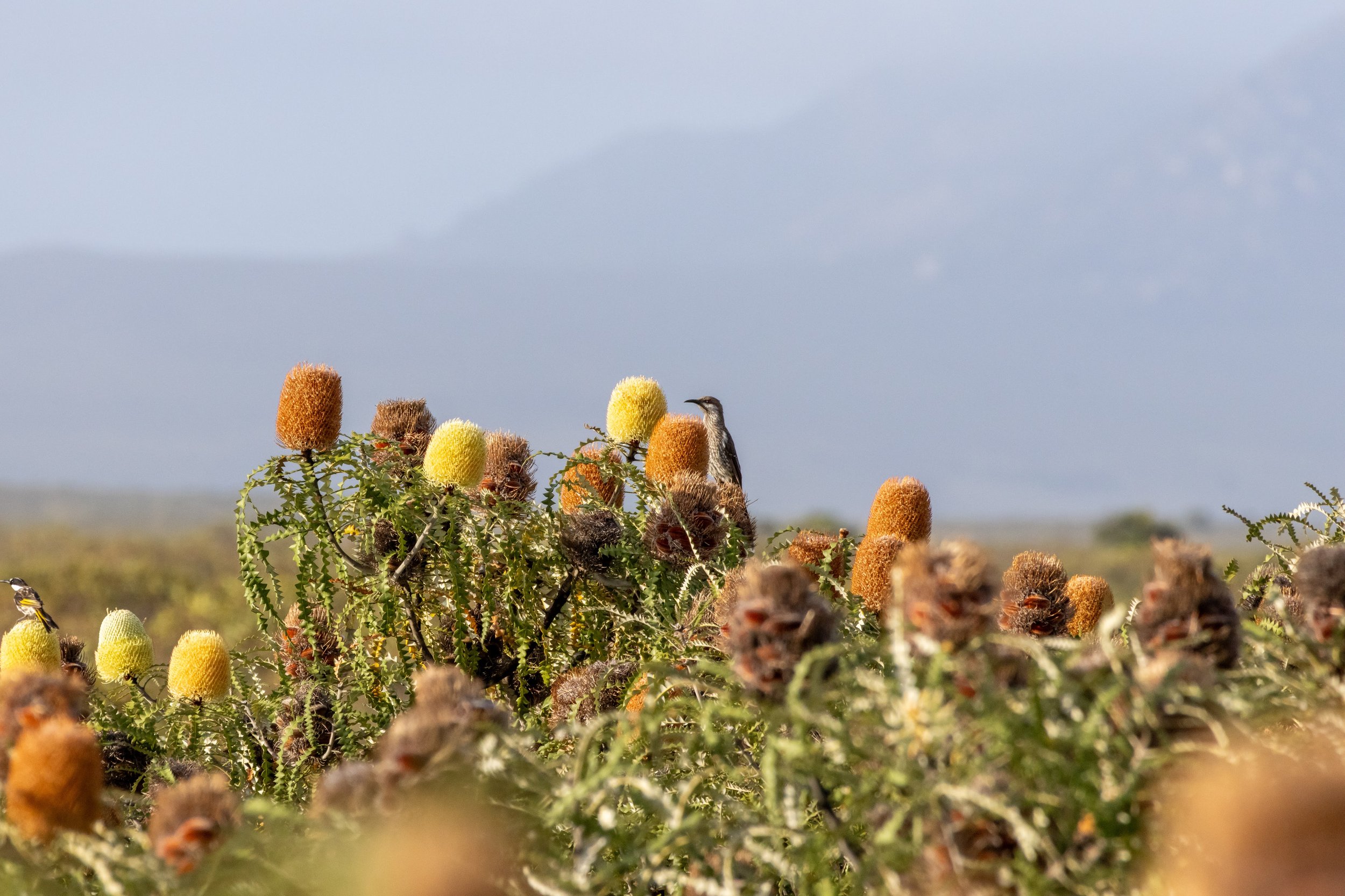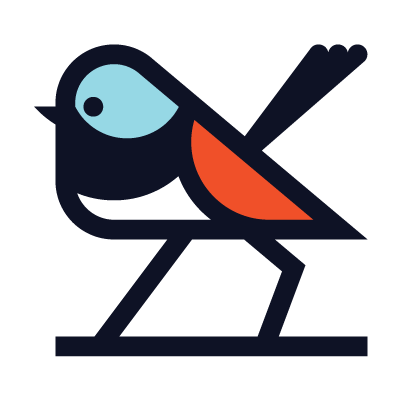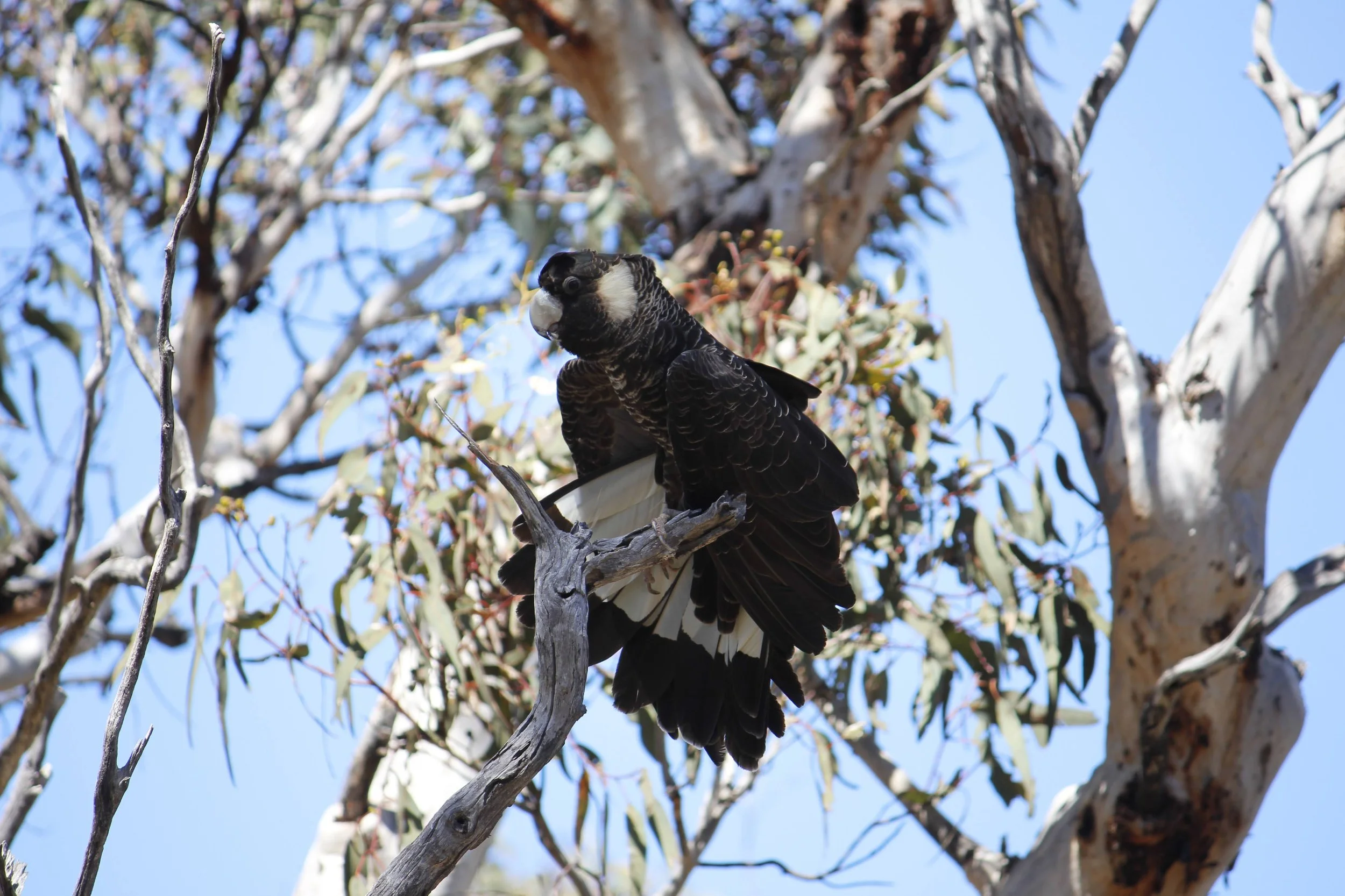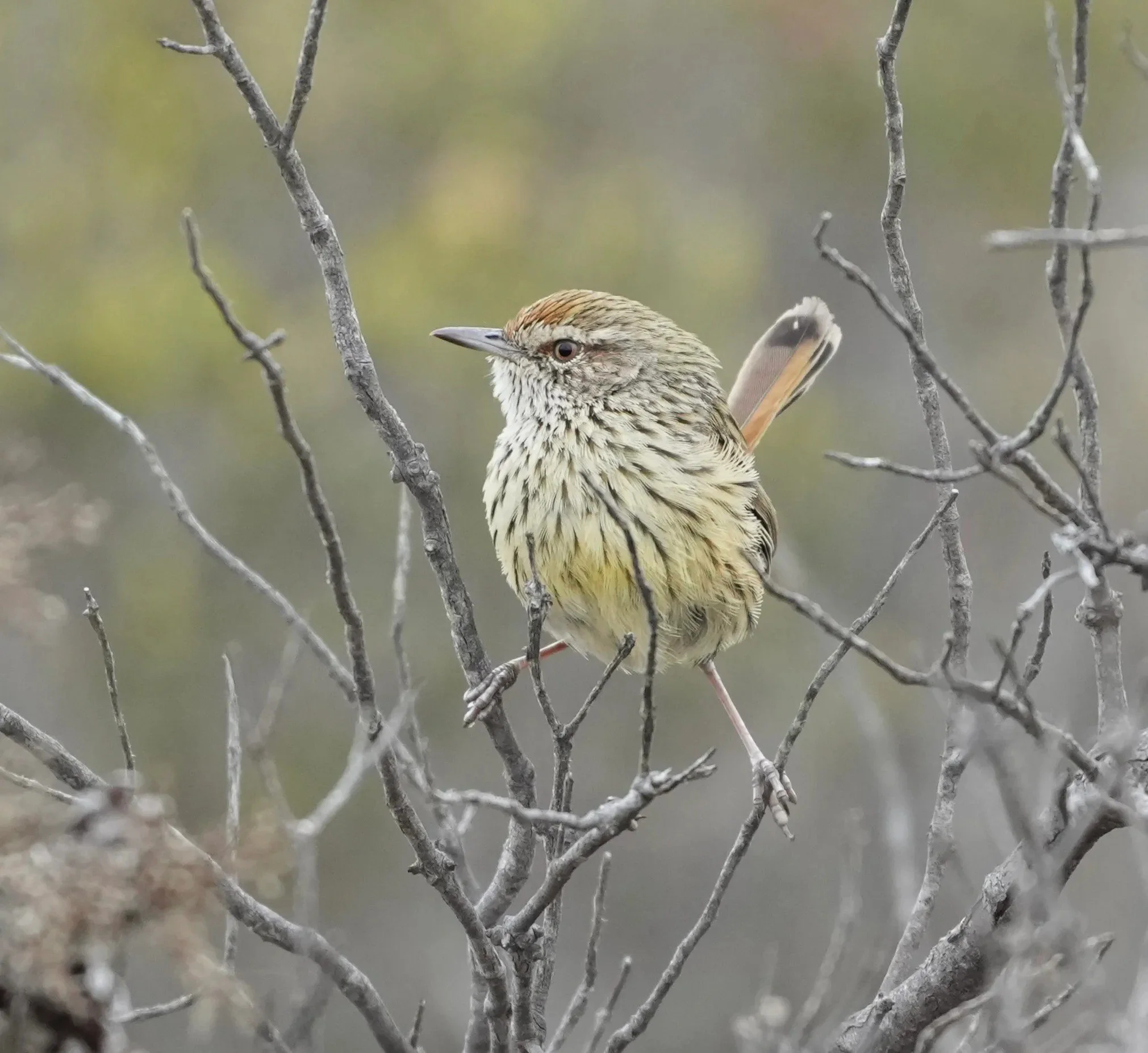
Southwest Endemics
Southwest Endemics & Specialties
Leader: Louis Masarei
Group size limit: 3
Upcoming Departures:
Price: From $5200 AUD
Single Supplement: $350 AUD
6th - 13th November 2025 (1 of 3 Spaces available)
February 2026 (3 of 3 Spaces available)
November 2026 (3 of 3 Spaces available)
-
Departing Perth, we will make our way to the diverse eucalypt woodlands of Dryandra. Along the way we will make stops at Perth's wetlands and selected locations in the Perth Hills to focus on species found closer to the city.
This may include parrots such as Western Corella, Red-capped Parrot and Carnaby's Black-Cockatoo, and members of the diverse set of waterbirds common to the area, such as Musk Duck and Blue-billed Duck, and many interesting small passerines such as Golden Whistler and Western Wattlebird.
By the afternoon, we will arrive at Dryandra’s Gnaala Mia Campground and head out for some twilight birding, looking for specialties such as Purple-crowned Lorikeet, Regent Parrot, Australian Ringneck, Western Rosella, and the ever-present Rufous Treecreeper.
As the sun retreats we will hopefully be visited by Woylies and Chudditch. After dinner we have the option to spotlight for Southern Boobook, Tawny Frogmouth and potentially Eastern Barn Owl.
-
The morning at Dryandra will see us target Western Shrike-tit, followed by Western Spinebill, Blue-breasted Fairywren, Western Thornbill, Western Yellow Robin, and Elegant Parrot among many others in this unique environment.
We will bird various locations around the Wandoo woodland with the constant potential of spying a Numbat until the birds slow and we are drawn further south.
Depending on our timeline, we will stop at reserves and towns along the way to pick up birds that may have eluded us in Dryandra’s woodlands. Our final destination for the day, the Stirling Range Retreat, provides an exceptionally birdy overnighting location with a backdrop of the southwest’s tallest mountains.
Purple-crowned Lorikeets, Western Shrike-tit, Gilbert’s and Brown-headed Honeyeaters are regulars in the grounds of the retreat and afford exceptional looks. The resident Australian Owlet-Nightjars may pop its head out as the rest of the local honeyeaters provide the evening soundscape, before Southern Boobooks and Tawny Frogmouths take over.
-
Today we will take a drive deeper into the Stirling Ranges area, looking for Western Fieldwren. Western Fieldwrens are a particularly charismatic passerine that can take some time to get onto in their unique little corner of the ranges; which is thankfully shared with Tawny-crowned Honeyeaters, Elegant Parrots and Black-faced Woodswallows, who will keep us more than entertained. Spotted and Striated Pardalote, and Inland and Yellow-rumped Thornbills may also be using the woodlands and the edges of bordering farmlands. These ranges are quite surreal in a landscape that is generally extremely flat. Bluff Knoll is the highest point in this area and on the odd very rare occasion it is the only place in Western Australia that sees snow.
Our first go at the Western Whipbirds presents a fantastic birding challenge: we will hear them, though their skulky behavior can make obtaining uninterrupted views difficult in this dense habitat. Our destination that evening, Cheynes Beach, will provide many more opportunities. Upon our arrival at Cheynes, we will have our first encounters with the famed Noisy Scrub-bird, and along the way watch Red-eared Firetails forage on the grass. While we will certainly hear the Scrub-bird call, it can be a difficult bird to see easily the first time.
-
Morning will break at the wonderful Cheynes Beach. Our first target of the day will be Western Bristlebird. The heath nearby our accommodation is exceptionally productive, and good for not only the 3 skulkers, but various mammals and a suite of honeyeaters including Western Wattlebird, White-cheeked Honeyeater and Tawny-crowned Honeyeater.
We will bird throughout the morning, affording ourselves the best chances to bump into some Western Whipbirds in this specific habitat. After lunch we will check certain spots for Brush Bronzewing and Southern Emuwren
The evening may see us returning to the search for Noisy Scrub-birds, where we will likely also be able to pick up White-breasted Robin.
-
Depending on our success with the 3 skulkers so far, we may take a trip up to Corackerup Nature Reserve to target some of the mallee birds in the area: most notably Malleefowl and Southern Scrub-Robin, though others such as Purple-gaped Honeyeater and Shy Heathwren may present excellent looks as well. On our return, we will have the chance to visit some of the wetlands local to Cheynes, with the hope of a lucky encounter with the occasionally calling Australasian Bittern.
-
A final morning to chase the skulkers we may still need before making our way West to try and pick up Western Corella. Then on to the Karri & Tingle Forests, the impressive height these Eucalypts grow to makes birding difficult for canopy dwellers, though birds using the undergrowth such as Red-winged Fairywren, Red-eared Firetail and White-breasted Robin will be relatively easy to find. Pemberton is a beautiful old logging town that provides a gorgeous backdrop for us to overnight at and wake up to a soundscape that often includes Baudin’s Black Cockatoo. It provides a diversity of extra opportunities for any of the southwest endemics and near endemics that we may still be looking for.
-
On our way to Margaret River, we will visit great locations for another go at and Baudin’s Black Cockatoo, before moving through farmlands and back to woodlands and the western coast.
An opportunity presents to visit an area to find Bridled Terns, and where Rock Parrots can regularly be seen in the evening. These same coastal areas are a stronghold for Hooded Plovers and depending on coastal conditions, we may take the chance to search for them.
Scarlet Robins, Splendid Fairywrens and Shining Bronze-Cuckoos should greet us in the evening at our accommodation with Red-tailed, Carnaby’s and Baudin’s Black Cockatoos providing the sunset soundscape. A diversity of nocturnal birds and mammals can be seen in the area, and depending on our successes so far, we can take the opportunity to chase some of them up on our last evening.
-
Our final morning in the Southwest, waking up with the Honeyeaters, Thornbills, Cuckoos & Fairywrens. We will focus on any of the endemics we have missed, or need better views or photographs of, and perhaps visit the turquoise blue waters near Cape Naturaliste. On the way back to Perth, we will visit may different wetlands for local waders and waterbirds before setting in for lunch and afterwards your own arranged accommodation for the night.










